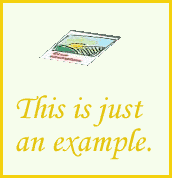
Back Plantilla:Hollywood cartoon Catalan Template:Infobox Hollywood cartoon English Template:Infobox Hollywood cartoon Japanese Predefinição:Cinema/Hollywood cartoon Portuguese Template:Infobox Hollywood cartoon SIMPLE Mall:Tecknad kortfilm Swedish แม่แบบ:Infobox Hollywood cartoon Thai Bản mẫu:Infobox Hollywood cartoon Vietnamese
Pemakaian
[sunting sumber]An Infobox Hollywood cartoon may be used to summarize information about an American-produced theatrical animated short film. It was created for use by Wikipedia:WikiProject American animation.
Please do not make major changes to the infobox, such as the addition of new fields (e.g. MPAA ratings), without proposing and discussing it on the talk page first. Thank you.
| Duck Amuck Serial Looney Tunes (Daffy Duck) | |
|---|---|
 The title card of Duck Amuck | |
| Sutradara | Charles M. Jones |
| Produser | Eddie Selzer |
| Ide Cerita | Michael Maltese |
| Pengisi suara | Mel Blanc |
| Musik | Carl Stalling |
| Animator | Ben Washam Ken Harris Lloyd Vaughan |
| Dirancang oleh | Maurice Noble |
| Latar Belakang oleh | Philip DeGuard |
| Studio | Warner Bros. Cartoons |
| Didistribusikan oleh | Warner Bros. Pictures The Vitaphone Corporation |
| Dikeluarkan pada date(s) | February 28, 1953 (USA) |
| Format warna | Technicolor |
| Lama waktu | 7 min |
| Bahasa | English |
Usage
[sunting sumber]{{Infobox Hollywood cartoon
| cartoon_name =
| series =
| image =
| image_size =
| caption =
| director =
| producer =
| story_artist =
| narrator =
| voice_actor =
| musician =
| animator =
| layout_artist =
| background_artist =
| studio =
| distributor =
| release_date =
| color_process =
| runtime =
| country =
| language =
| preceded_by =
| followed_by =
}}
|
- Cartoon Name: The official title of the film, as spelled onscreen or in official production documents.
- Series: The short film series to which the short belongs. For blanket series such as Looney Tunes and Terrytoons, notate the starring character(s) of the short alongside the series title, for example Terrytoons (Mighty Mouse) series instead of just Terrytoons series.
- Image and Caption: All you need for the image code is the name of the image file without the "Image:" at the front. Each image is automatically formatted to a maximum width of 250 pixels unless another width is specified. The image for the infobox should be a poster, the main title card (if it has artwork depicting the characters), or a clear screenshot of the characters. The caption should identify the characters depicted, and explain where the image came from.
- The credits for Director(s), Producer(s), Story(board) artist(s), Narrator, Voice actor(s), Musician(s), Animator(s), Layout artist(s) and Background artist(s) should identify the persons credited onscreen, as well as others who were not credited. Cast and crew should ideally be credited as they were in the original onscreen titles (for example, Charles M. Jones instead of Chuck Jones for most of his films). Voice actors and musicians are optional fields.
- Studio: The animation studio/company who made the film, if it is not the same as the distributor. For example, all "Warner Bros." cartoons released before 1944 were produced by Leon Schlesinger Productions. This field is optional.
- Distributor: The company who released the film.
- Release date: The release date for each country, followed by the country name in parenthesis: February 15, 1991 (USA)
- Color process: Type of film stock used to make the film. For most cartoons, this should be filled only with one of the following choices: black and white, Sepia tone, Technicolor, Technicolor (two-color), Cinecolor, Polacolor, or Metrocolor. For more modern (post-1970) cartoons, "Color" will suffice.
- Runtime: The running time of the cartoon, rounded to the nearest minute.
- Country: The country of the film's origin.
- Language: The language spoken in the film. If it is a silent film, type "Silent".
- Preceded by: If the film is part of a series, insert the film that preceded it in the series.
- Followed by: If the film is part of a series, insert the film that followed it in the series.
See also
[sunting sumber]}}
Lihat pula
[sunting sumber]